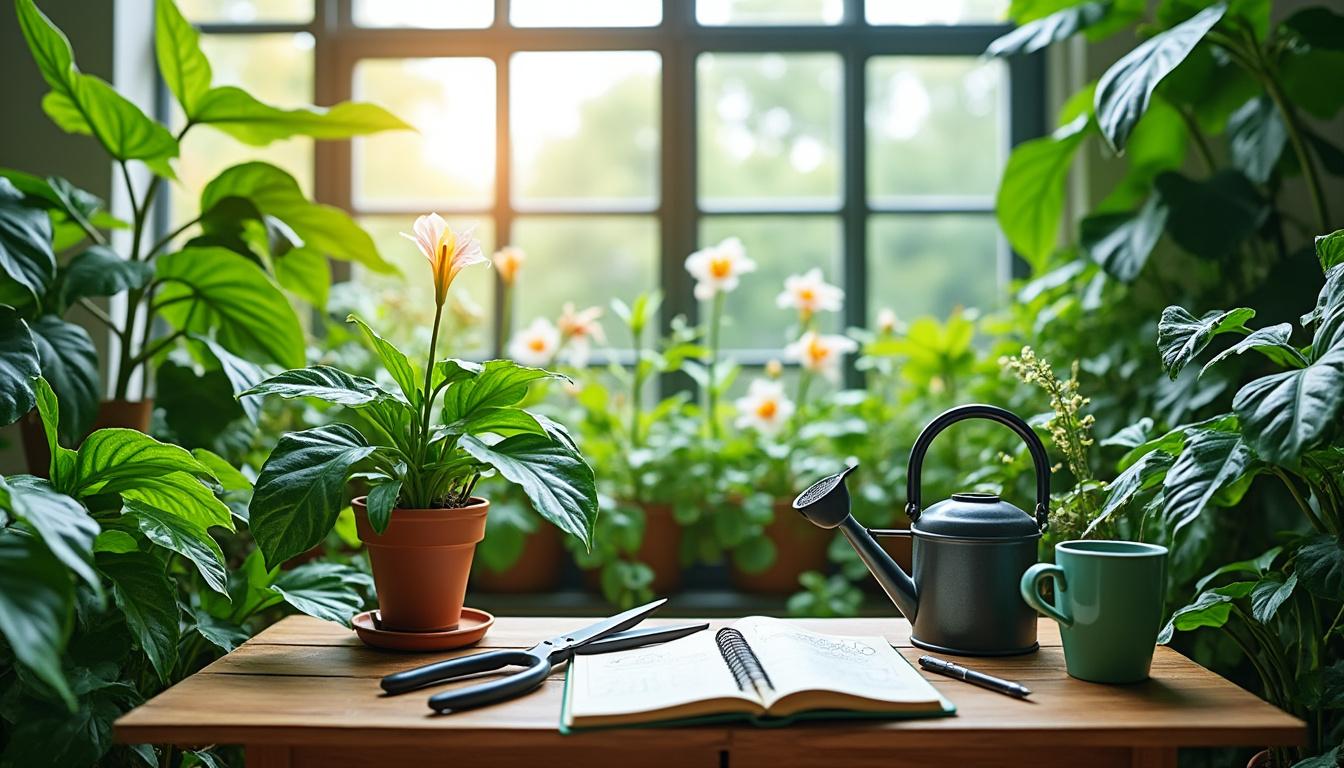In the evolving world of horticulture, maintaining vibrant and healthy plants is paramount. Pat Sullivan, a seasoned expert from Sullivan Hardware and Garden, offers indispensable guidance that transcends seasons and environments. His plant care strategies, deeply rooted in botanical insights and enriched by years of expertise, equip both novice and experienced gardeners with the tools necessary to cultivate thriving greenery. With a focus on essential advice that promotes plant wellness and sustains indoor plants, Sullivan emphasizes practical tactics to enhance green thumbs everywhere.
Pat Sullivan’s Proven Gardening Tips For Plant Wellness
Effective plant care hinges on understanding the specific needs of each species. Pat Sullivan stresses that tailoring water, light, and nutrition requirements based on horticulture knowledge is crucial to foster longevity and growth. For instance, overwatering is a common pitfall that undermines root health, while inadequate light stunts development. Sullivan advocates following essential routines that support photosynthesis and soil vitality to achieve optimal plant wellness.
- Provide adequate but not excessive watering tailored to plant type
- Ensure exposure to appropriate sunlight cycles or artificial grow lights
- Use nutrient-rich, well-drained soil to promote root health
- Employ regular pruning to remove dead or damaged foliage
- Maintain humidity levels suitable for indoor plants to prevent stress
This approach not only maximizes growth but fosters resilience against environmental stressors, making these gardening tips vital for sustainable plant care.
| Plant Type | Watering Frequency | Light Preference | Soil Recommendation |
|---|---|---|---|
| Succulents | Biweekly | Bright, indirect | Well-drained sandy soil |
| Ferns | Twice weekly | Low to medium, indirect | Rich, organic soil |
| Orchids | Weekly | Bright, filtered | Loose, aerated bark mix |
| Peace Lily | Weekly | Low to medium, indirect | Peaty, well-drained soil |
Houseplant Solutions Backed by Pat Sullivan’s Botanical Insights
In 2025, indoor plants have surged in popularity, transforming living spaces into lush environments. Pat Sullivan provides pragmatic solutions to common houseplant challenges, including pests, watering inconsistencies, and lighting deficiencies. By integrating these botanical insights, households can maintain green thumb achievements year-round.
- Implement pest-proofing techniques to safeguard plant health naturally
- Adopt consistent watering schedules adapted to seasonal indoor conditions
- Use supplemental grow lights when natural sunlight is insufficient
- Rotate plants periodically to ensure even growth
- Inspect plants regularly for early signs of disease or infestations
This methodology aligns with authoritative home care approaches and can be further augmented by exploring expert-curated recommendations on pest control and home maintenance here and here.
| Common Issue | Recommended Solution | Expected Benefit |
|---|---|---|
| Spider Mites | Regular misting and neem oil applications | Reduction in infestation and improved leaf health |
| Overwatering | Use moisture meters and drainage-enhanced pots | Prevention of root rot and enhanced oxygen flow |
| Insufficient Light | Install adjustable LED grow lights | Stimulated photosynthesis and robust growth |
Essential Advice On Adapting Plant Care To Extreme Weather Conditions
Extreme heat and fluctuating humidity levels present significant challenges for gardeners. Drawing on extensive horticulture knowledge, Pat Sullivan advocates for adaptive strategies to preserve plant vitality during such periods. Techniques such as strategic mulching, optimized watering schedules, and protective shading are central to these practices.
- Apply organic mulch to retain soil moisture and regulate temperature
- Water deeply during cooler parts of the day to maximize absorption
- Use shade cloths or indoor relocations to shield sensitive plants
- Monitor soil moisture rigorously to avoid drought stress
- Group plants with similar care needs to streamline maintenance
By integrating these tactics, gardeners can sustain plant wellness and prevent damage caused by extreme environmental variations. Complementary lifestyle habits that reduce household heat impact may also align with effective plant care, as outlined in detailed guides on daily habits promoting calm and focused living here.
| Weather Condition | Care Adjustment | Benefit |
|---|---|---|
| High Heat | Shade coverage and increased watering frequency | Maintains hydration and prevents leaf scorch |
| Low Humidity | Utilize pebble trays and frequent misting | Enhances ambient moisture, reducing stress |
| Sudden Heat Fluctuations | Gradual acclimation and plant grouping | Minimizes shock and supports steady growth |
Frequently Asked Questions About Plant Care According To Pat Sullivan
- What is the best way to water indoor plants without overdoing it?
Water when the top inch of soil feels dry and always ensure pots have proper drainage to avoid waterlogging. - How can I naturally prevent pests on my houseplants?
Regular inspection combined with natural remedies like neem oil or insecticidal soap helps keep pests at bay. - Which indoor plants are most suitable for beginners?
Plants such as snake plants, pothos, and spider plants are resilient and low-maintenance, making them perfect for beginners: More here. - How do I maintain plant health during winter indoors?
Maintain consistent humidity, reduce watering frequency, and provide supplemental light to mimic natural conditions. - Can plant care routines influence my well-being?
Indeed, integrating plant care into daily habits encourages mindfulness and calm, linking well-being with nature: explore related routines here.

